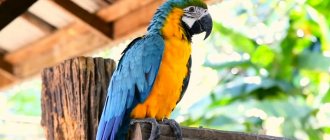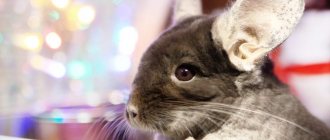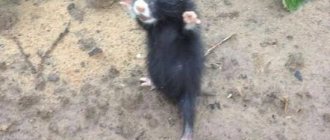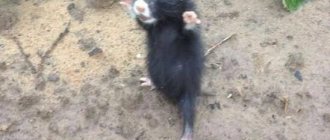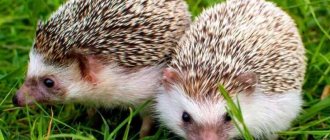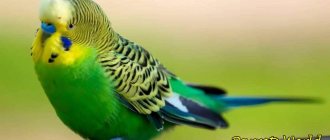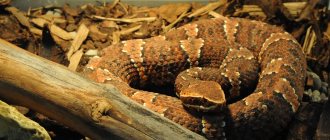Snakes are the most unusual creatures on the planet. Even with the complete absence of limbs, they are capable of instilling fear in any person, because the main weapon of reptiles is poison. Of course, not all varieties of snakes are poisonous, but at first glance it is almost impossible to distinguish them, especially for an inexperienced person. According to statistics, more than half of all inhabitants of the planet are wary of these animals, and only 1/5 boldly declare that they are not afraid of any snakes.
For many years, humanity has attributed unusual abilities to these reptiles, describing in their legends and tales snake-like talking creatures capable of striking a person with one glance. All this has led to the fact that today only true connoisseurs of cold-blooded snakes love them, but even they are wary of sharp teeth and a death grip.
Snake as a pet
The Snake suborder, consisting of 2,500 species, is not a warm-blooded creature. Body length is from 0.1 to 9 m, but most of these animals are 1 m. The shape is short and thick, long, thin, flattened. Representatives of all species have dry skin with dense scales. On its belly it is adapted for crawling. The colors vary - from simple dark colors to bright ones, with multi-colored spots or stripes; in others, they form fancy patterns. Twice a year, individuals shed their old cover, under which a new, initially vulnerable, cover has grown. Healthy reptiles shed within 20 minutes.
Low-blind and hard of hearing, snakes feel objects and recognize odors with their tongue. They sense heat perfectly with the organ located between the eyes. The eyes are a special part of the animal’s body: they never close, are always covered with fused transparent eyelids, and frighten with an unblinking gaze. The food of predators consists mainly of rodents, small birds and their eggs, frogs, lizards, and sometimes insects and worms. The food is swallowed whole, head first, having previously been rendered harmless by squeezing or poison. Prey is digested on average in 2-8 days, the warmer it is, the faster.
The best choice for a beginner would be a non-venomous animal. Poisonous animals are prohibited for keeping at home. The most harmless are small domestic snakes up to 1.5 m long.
The most popular types of domestic snakes:
- The Red Rat Snake is very easy to care for and is active and curious. Easily tamed and child friendly. The Corn Snake has beautiful patterns of different colors on its body. An interesting snake, agile, calmly walking into your arms.
Description
It is quite easy to distinguish a snake from other animals. Only these reptiles have no legs at all, but this is clearly visible only upon close contact. It can be almost impossible to see a snake in its natural environment. They are all skilled camouflages, capable of lying motionless for hours waiting for prey. Many may mistake a snake for an ordinary lizard, since from a distance they even have a similar manner of movement .
Interestingly, snakes need teeth solely for spraying venom into their prey, firmly grasping it, and further pushing it into the esophagus. These reptiles do not chew their prey at all, swallowing it whole, which is why the teeth of snakes are very sharp, thin and curved back.
Snakes can hunt at different times of the day, in which Jacobson’s sense organ helps them a lot. Thanks to him, cold-blooded animals accurately determine the location of the victim. Their tongue is constantly in motion, as if feeling the area around and transmitting information to the sky, where the characteristic pits are located - Jacobson's organ, which perform further chemical analysis.
These reptiles have no hearing at all, and their eyesight is very weak, but at the same time they were able to live on Earth for many years unchanged. How? Some common species have an additional thermolocation organ that can detect the heat of prey at a great distance. This allows predators to hunt without making eye contact.
Character and behavior of snakes
Snakes defend themselves by frightening by hissing, moving their tail, imitating the color of a poisonous snake, and can emit an unpleasant odor or pretend to be dead. They can climb trees, swim well, and crawl on land at a speed of 3-15 km/h. Many are active during the day, and there are nocturnal predators. Some hunt, crawling silently, others “scour” the territory and pounce. The amount of food eaten is much less than the weight of the snake. A low metabolic rate allows her to endure hunger for several months. They live alone, as they are prone to cannibalism.
The snake as a pet is quite calm. Even if you anger an animal, it will simply try to hide or hiss, otherwise it will defend itself by pinching the offender. At home, they only allow you to take care of themselves, they get used to the smells of a person, but they are not able to love him. Before hibernation or before molting, a previously active animal may refuse food and lie indifferently in a ring. While walking around the house, the pet can escape through a suitable gap.
Record holders of the Moscow Zoo
Vasiliev is proud of the collection of reptiles that was collected and bred here with his direct participation (240 species), calling it a very significant achievement.
The capital’s terrarium contains not just a lot of poisonous snakes: among them there are rare specimens not found in other zoos in the world . Many species were bred for the first time. According to the scientist, he managed to obtain over 12 species of cobras and even the red-headed krait, a reptile that previously did not produce offspring in captivity. This beautiful poisonous creature devours only snakes, going out to hunt at night.
This is interesting! Ludwig Trutnau, a famous herpetologist from Germany, was amazed to see a krait in the Moscow Zoo (his snake lived for 1.5 years and he considered this an impressive period). Here, says Vasiliev, kraits have been living and breeding since 1998.
Black pythons lived in the Moscow Zoo for ten years, although in no zoo they “stayed” in the world for more than a year and a half. To do this, Vasiliev had to do a lot of preparatory work, in particular, go to New Guinea and live for a month among the Papuans, studying the habits of black pythons.
This complex, almost relict and isolated species lives in the highlands. After capture, he is ill for a long time and does not adapt well to moving to the city. Vasiliev devoted an entire section of his doctoral dissertation to the black python, exploring the extremely rich composition of its parasitic fauna. Only after identifying all the parasites by name and selecting treatment regimens did the pythons take root in the conditions of the Moscow Zoo.
Return to content
Nutrition of domestic snakes
Snakes have a physiological need for live food. Moreover, keeping a reptile that prefers a particular food is always difficult. Owners often wonder what to feed their snake at home. You can switch to killed rodents or birds, but not all pets eat this. One whole victim is enough for feeding. Experts say that a snake, as a pet, should not eat live food to avoid becoming infected or injured. You can buy frozen food. But in such a product, many beneficial substances are destroyed, without which the pet’s immunity is greatly weakened.
It is better to feed a newly acquired snake for 4-5 days. Adult animals eat once a week, small ones - every 5 days. Meter-sized individuals are fed once every 2 weeks or 30 days. While shedding their skin and in hibernation, they go without food for 2-4 months. The carcass should be 2 times thicker than the widest part of the snake’s body, the size of its head. For safety, rats' incisors are broken or stunned. After eating, to prevent the snake from regurgitating, you do not need to touch the animal for 3 days.
Who is bigger, a python or an anaconda?
But even if you close your eyes to data that seems unreliable, the green anaconda still wins the heavyweight title. Its maximum weight can reach 200 kg, which is 30 kg more than the measurements of most of the largest Asian pythons. Of course, both of these snakes are very large.
Interesting materials:
When does navigation 2022 St. Petersburg open? When is Elegant Age Day celebrated? When is Laboratory Assistant Day celebrated? When is Medical Worker Day celebrated in Belarus? When is Angel Allaah Day celebrated? When is Private Security Guard Day celebrated? When is Gas Worker's Day celebrated in Ukraine? When is Chemist Day celebrated in Belarus? When is Medical Worker's Day celebrated? When will all exams be cancelled?
Maintenance and care
Keeping snakes at home requires compliance with certain rules.
Requirements for the terrarium:
- Material: glass or plastic.
- Dimensions for medium animals are length 80, width and height 55, for large animals – 110 and 60 cm.
- Fluorescent lighting.
- Heating for snakes in the middle zone is 25-30 degrees Celsius during the day, and for tropical ones - up to 35. At night it is 5 degrees cooler.
- Good locks on the door.
- Correct electrical wiring.
- Providing shelter: roots, branches, stones, caves.
- Suitable bedding made from special sawdust, but not from coniferous trees; coconut flakes; You can take a napkin or diaper.
- One half of the snake’s house should be dry and warm, the other half should be cool and humid.
- A prerequisite is a drinking bowl (pool).
Purity:
- change the water in the drinking bowl every day;
- monthly major cleaning with replacement of soil and shelter fragments as necessary;
- washing the pool when dirt appears in it;
- After each meal, remove drops and crumbs;
- disinfect with UHF, the rays of which have a beneficial effect on snakes and destroy ticks.
The air should be 90% humid, which will be helped by spraying twice.
You should handle your pet carefully. You need to tame it after the snake gets used to the smell of its owner. You should not make sudden movements; it is more correct to hold it from the sides so that the body lies on your arms. If the animal shows concern, release it back to its place.
How many years do turtles live?
Turtles, although they belong to one of the four orders of reptiles (tortoises, crocodiles, scalybacks, beaked heads), show other signs of aging that are not comparable to many mammals. Unlike some animals and many fish species, which grow continuously throughout their lives, these animals tend to grow more slowly as they get older. Like amphibians, most reptiles have replaceable teeth.
Several species of these reptiles appear to exhibit little aging and relatively long lifespans.
How long turtles live is uncertain, but a long lifespan is evident, as some in captivity live up to 70 years. Increased mortality was found in wild species, but external natural factors likely played a role. A distinctive feature of these animals is their shell, which protects them from enemies. Maybe that’s why this species lives quite a long time, including in nature.
Subtleties and nuances when keeping snakes at home
- The new terrarium, with heating connected, warms up within three days.
- A mouse that is not eaten and left with a snake in its house can attack the reptile and bite.
- Frozen food should be warmed (not in the microwave) to room temperature.
- Food should be dried or wiped dry.
- It is better to feed using a separate box.
- Use dietary supplements and liquid vitamins.
- Do not touch your pet if your hands are not washed after feeding.
- It happens that snakes kept at home have difficulty shedding their skin sheath. In this case, they need help.
- After 2-4 years, individuals become sexually mature, at which time growth is fastest.
- The embryos develop within 1-2 months in the laid eggs.
Reproduction
For those who want to start breeding snakes, the corn snake is a suitable candidate.
For breeding work, a pair is selected and planted together. After mating, females lay eggs. The eggs are transferred to the incubator on a special substrate for incubation. It does not mold and holds moisture well. After approximately 60-70 days at a temperature of 24-28 °C. babies hatch.
Tips for keeping snakes
When choosing a pet, you need to find out in advance about its taste preferences. It is better to purchase a snake from a reliable, trusted place. It is highly undesirable to choose dangerous representatives of the species. You need to purchase everything you need in advance and study how to keep snakes at home.
The future pet should be checked by picking it up to see how strong and well-nourished the body is, and whether there are ticks. At home, place the reptile in a place away from other snakes and do not disturb it for 3-4 days. You must not bathe the snake, approach it with your face, and do not let other domestic animals near it. If she is very dirty, then let her swim in the bath and wash the baby under warm water.
Imperial boa morphs
Color varies from white to black, with and without patterns. The most common morph is the Colombian, the color is called “normal” - this is a color close to natural. The color of the boa constrictor ranges from light sand to brown-orange with spots of dark, sometimes black color. On the tail - in the form of red ovals with a very dark outline.
Photos of the imperial boa constrictor clearly demonstrate the colors. The most common one is called Salmon. The boa constrictor is light with red tints. Super salmon has a more saturated color. These snakes do not have black pigmentation. Super salmon are born when two salmon are crossed with a probability of 1 in 4.
Albinos are also common. They are called amelanists. By type they are distinguished into Kahl Albino, Sharp Albino and Albino T-plus. They differ from normals in the absence of dark spots in their color. They are characterized by a red-yellow color with white zones and red eyes. Young snakes are brightly colored, but fade with age. However, the drawing remains.
When a normal and an albino are mated, the offspring in the first generation are obtained only with the color of the normal. But the cubs are carriers of the albino gene, they pass it on to inheritance. In 25% of cases, the offspring will be albinos. Crossing a normal born from an albino with an albino gives a 50% chance of producing an albino.
The offspring obtained from salmon and albino are white with bright spots. This breed of boa constrictor is called Sunglow. It is obtained by crossing several generations of snakes, and the price of the imperial Sanglo boa is higher than the natural color. There are three varieties of Sanglo: Kahl, Sharp and T-plus.
Health and lifespan of kites
Domesticated snakes are susceptible to diseases that are easier to prevent than to treat. In addition, they need regular examination by a veterinarian. The causes of diseases may include improper feeding, maintenance, and stress. If there are any deviations in the pet’s behavior from the norm, it should be shown to a specialist. How long do pet snakes live? Scientists suggest that age depends on the length of the individual. With good care at home, some live 40 years or more. The average life of a domestic snake is 10-20 years.
A kind and calm, cunning and smart, beautiful and bewitching inhabitant of the terrarium can really become a friend for many years. And the maintenance of her home will be a thoughtful and original decoration of the room.
Toxicity, metabolism, free radicals
In the 1950s, another explanation emerged: aging and death are the result of toxic metabolic byproducts. This idea is the theory of “free radical damage,” where oxidants accumulate to cause damage to the body.
The idea is that there is a direct relationship between oxygen consumption and the formation of radical oxygen.
There is a direct link between metabolism and aging, whether it supports the standard of living or the theory of free radical damage.
Structure
Few people know, but some snakes, in the process of evolution, for some reason retained the rudiments of the bones of the lower limb girdle. Boas and pythons are examples of this. But the similarities end there; the structure of the rudiments differs.
Male pythons have preserved rudiments of the pelvic bones and hook-like tiny legs, located on the sides of the anus. Of course, the limbs are not functional; they are not even used when climbing trees. Again, one feature that distinguishes a python from a boa constrictor is the preserved rudimentary mortal remains in the hemipenes. With these shoots, the male rubs the female during the ancient years of mating games.
The boa constrictor also has small rudimentary processes with remains of bones, located almost at the anus. They look less like claws, like those of a python, but like dried paws. Attached to the rudiments of the pelvic bones. In contrast to the python, this trait is found in boas of both sexes.
